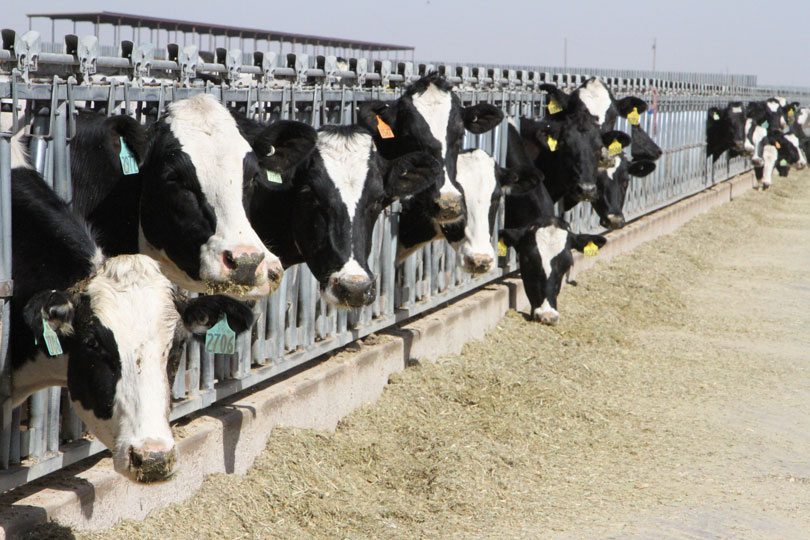By Jessica Domel
Multimedia Reporter
Texas dairy farms produced more milk in the first quarter of this year, but a lack of favorable conditions this time of year is now taking its toll.
According to the U.S. Department of Agriculture, Texas dairies produced 1.76 million pounds more milk this quarter than what was produced in the first quarter of 2017.
“There’s a few factors. I think the biggest factor has to go to Mother Nature. We just have had a really mild year. That dry weather that everybody had in the Panhandle, and a lot of the rest of the states, really doesn’t hurt milk production,” Darren Turley, executive director of the Texas Association of Dairymen, said in an interview with the Texas Farm Bureau (TFB) Radio Network. “It makes you short on forage going forward and wheat crops mess up over the winter, but as far as dairy cows, they like that dry weather.”
In areas where the temperature wasn’t that cold, production didn’t fall off and cows milked well, Turley said.
“Really, for quite some time now, when we look at last year’s mild temperatures even through the summer, we kept cows milking well. So that’s one of the biggest factors to the change,” Turley said.
Texas dairies are coming off of a good production year and are probably milking a few more cows than in years past.
“They’ve just been basically run through kind of the end of that spell,” Turley said. “So now things are turning, and prices are going down. Of course, the heat is fixing to show up in Texas. I don’t know that we can maintain that gain, but we did have a really good first quarter.”
Going into the second quarter, dairy farmers are worried about the weather. Some areas are too dry or wildfire-ravaged to produce the forage needed for their livestock.
“Producers are feeling that. That’s really the big story for us,” Turley said. “With low prices, we can’t handle buying extremely high hay or bringing things in from a long distance and incur a big trucking bill. So there’s definitely some concern there still. We need to continue to have a little help from Mother Nature.”
But demand for Texas dairy products isn’t limited to just milk.
A milk powder plant has just opened in the Panhandle. A butter powder plant in the old denim mill in Littlefield is expected to open by the end of the year or the first part of next year.
“I think last year was a good year. I think most everybody was in good shape starting this year, but we are in a situation where our prices are starting to fall,” Turley said.
Even if Mother Nature starts to cooperate again, Turley said it will still be tough for dairy farmers to make a profit.
“Right now, they’re thinking in the fall the prices will come back up,” Turley said. “Maybe we will come back to break-even or even making money by the end of the year.”
In previous years, dairies from other states like California were moving to Texas, but the trend has fallen off.
“A lot of factors affect that. A lot of that is where they come from—the economy from where they are leaving—but right now, we have not seen a push for another move of dairies. We probably won’t ever see the migration like we had in the past,” Turley said.
Texas dairies suffered through the drought, but Turley said the industry is now on the other side of that.
“Things are level, and safe, and looks like a good future for Texas production,” Turley said.
With the increase in production and plants being built and coming online, Texas is really moving forward to “maintain a very vibrant dairy industry,” according to Turley.
“That’s just really not happening anywhere else in the country, so that makes a big difference,” Turley said. “As you try to grow and see growth, you have to have some plans for that in the future and Texas is trying to do that. We are growing maybe even a little faster than we prepared, but with that mild year and that real good production the first quarter, we’re ahead of most states in where we’re headed.”
Having a vibrant dairy history, good milk production and an array of different dairy products produced in Texas contribute to the indu

